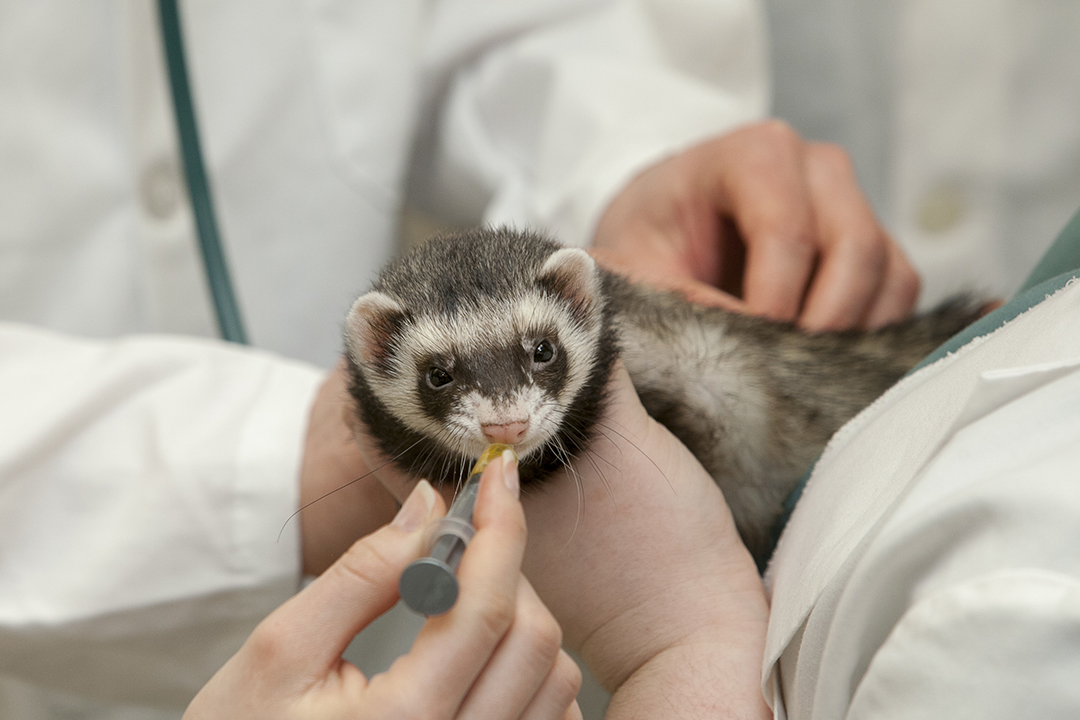
Animals may hold key to understanding proteins involved in COVID-19 infection
What makes the elderly and people with underlying health conditions more vulnerable to COVID-19?
By McGill University | WCVM TodayA team of researchers — including University of Saskatchewan virologist Dr. Vikram Misra (PhD) and Dr. Baljit Singh (BVSc & AH, PhD), the university’s incoming vice-president research — believe clues to help answer that question can be found in the proteins involved in initiating infection, as the SARS-CoV-2 virus binds to host cells of different animals.
Greater cellular oxidation with aging and sickness may explain why seniors and people with chronic illness get infected more often and more severely.
Understanding why some animals get infected and others do not could be the key to unlocking new treatments and therapies. In their recent study published in Computational and Structural Biotechnology Journal, the Canadian research team analyzed available protein sequences of the virus and host cell receptors across different species to find out why.
“We know that the virus can infect humans, cats, dogs and ferrets but not bovine and swine. Also, COVID-19 hits the elderly and people with underlying conditions more severely than the young and healthy ones. Until now reasons for this were unclear,” says Dr. Jaswinder Singh (PhD) an associate professor at McGill University in Montréal, Que.
He led the multidisciplinary team of scientists that included Drs. Rajinder Dhindsa (PhD) of McGill University as well as Misra, a virologist at the Western College of Veterinary Medicine (WCVM), and Baljit Singh, former dean of the University of Calgary’s Faculty of Veterinary Medicine.
Once inside a host cell, the SARS-CoV-2 virus hijacks the cell’s metabolic machinery to replicate and spread. The virus’s protein spikes attach to a protein receptor on the surface of the host cell called ACE2, fusing the membranes around the cell and the virus together. This process allows the virus to enter the cell and co-opt its protein-making machinery to make new copies of itself. The copies then go on to infect other healthy cells.
In analyzing the proteins and their amino acid building blocks, the researchers found that animals susceptible to the virus have a few things in common. Animals such as people, cats and dogs have two cysteine amino acids that form a special disulfide bond held together by an oxidizing cellular environment. This disulfide bond creates an anchor for the virus.
“Our analysis suggests that greater cellular oxidation in the elderly or those with underlying health conditions could predispose them to more vigorous infection, replication and disease,” says Dhindsa, a professor emeritus of biology at McGill University.
In the case of animals resistant to the virus, like pigs and cows, one of these two cysteine amino acids is missing, and the disulfide bond cannot be formed. As a result, the virus cannot anchor on to the cell.
According to the researchers, preventing the anchor from forming could be the key to unlocking new treatments for COVID-19. One strategy could be to disrupt the oxidizing environment that keeps the disulfide bonds intact.
“Antioxidants could decrease the severity of COVID-19 by interfering with entry of the virus into host cells and its survival afterwards in establishing further infection,” says Jaswandir Singh.
In terms of next steps, the researchers say CRISPR technology could be used to edit protein sequences and test out their theory. They’re are also investigating other proteins near the ACE2 receptor that may facilitate entry of the virus to see if they behave the same way.
The research team’s work also links to another COVID-19 research project led by Misra. With funding from the Natural Sciences and Engineering Research Council of Canada (NSERC), he and other USask scientists are working to develop a universal test that will help researchers monitor many wildlife species for exposure to the novel coronavirus that causes COVID-19.
Click here to view the original news release from McGill University.